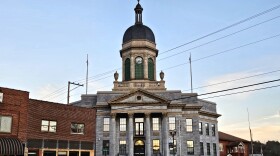-
Midway, about 15 minutes south of Winston-Salem, wasn’t even a town for most of its history. The Davidson County community became a municipality in 2006 in an effort to avoid getting annexed into the nearby city.
-
The Beaufort County town of Aurora, population 450, is one of a number of rural communities staking their economic futures on industrial park developments designed to attract employers.
-
In College Park and other southeast Raleigh neighborhoods, modern-looking, multi-story homes are going up next to much smaller homes that have been here for nearly a century. They often sell for more than a half-million dollars, while the older homes can be valued at around $100,000.
-
While much of the Helene relief supplies so far have come through private donations, community leaders in Mitchell County and across western North Carolina are asking for help from the state and federal government for the next phases of recovery.
-
Fountain's new recording and photography studios from Music Maker Relief Foundation, coupled with the long-running success of the concerts at R.A. Fountain General Store, show the impact that music and the arts can have in North Carolina’s rural communities.
-
One of the state’s only cryptocurrency mining operations is located a few miles outside Murphy at North Carolina’s far-western tip. And it’s driving the locals crazy.
-
The town of Star’s leaders want to build on the success of an arts facility by finding new uses for the other shuttered textile buildings and historic structures that line Main Street. But while most of Star’s historic buildings are standing strong, the town’s water and sewer infrastructure is showing its age.
-
In recent years, many Lumbees have helped shift Robeson County politically from a place with a reliable majority for the Democratic Party to a county that largely supports Republicans. A push for federal recognition for the tribe is one of the factors.
-
Mayor Billy Hammond and other town leaders came up with a dramatic plan to address repeat flooding: build a whole new downtown-style commercial district a few blocks up the street on higher ground.
-
East of Raleigh, the once sleepy suburb of Wendell ranked as the fastest-growing town in North Carolina between 2020 and 2021, with a population that increased by 16% in a single year.
Play Live Radio
Next Up:
0:00
0:00
Available On Air Stations










